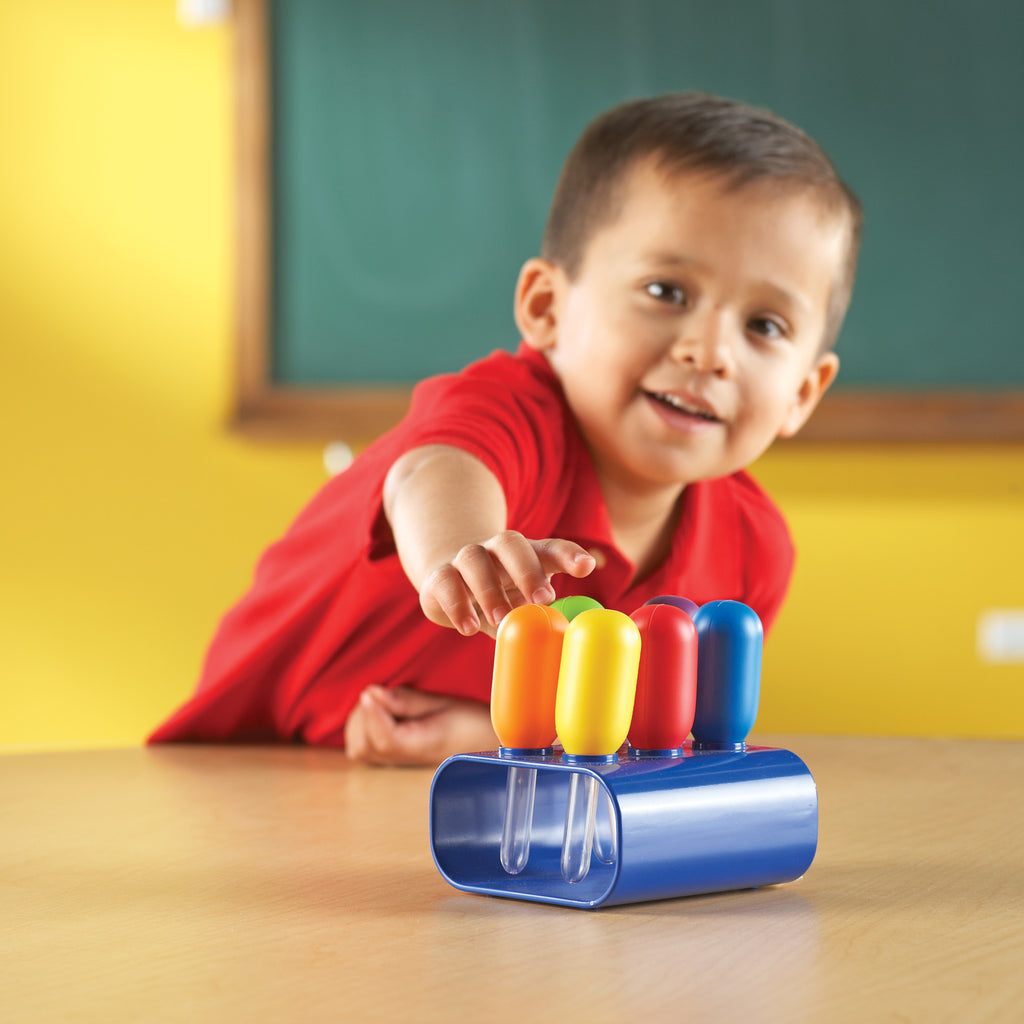Jumbo Eyedroppers with Stand
This set of 6 Jumbo Eyedroppers with stand is perfect to inspire curious young scientists! Eyedroppers are a crucial tool in any laboratory, facilitating experiments like mixing primary colours to make secondary colours, or observing early 'chemical reactions' such as dripping lemon juice onto baking soda.
This particular Jumbo Eyedropper is perfect for younger children as the bulb is large enough for two hands to work together initially but also small enough to be manipulated by a 'pincer grip' as the child's movements become more refined. It's never too early to encourage a child's budding interest in science, technology, engineering and maths (STEM) and the Jumbo Eyedroppers are a great place to start!
Parents and educators alike are often extremely eager to assist young children with the development of fine motor control. This is particularly true because of the impact of fine motor control on the development of writing skills. The use of an Eyedropper is an ideal pre-writing exercise. The child's grasp on the bulb helps to develop strength, control and coordination in the hands and fingers.
Recommended for ages 3+
In addition to supporting scientific discovery, the Eyedroppers can also be used during real Practical Life tasks - such as for watering indoor plants. Using a baster to water the plants limits the amount of water and allows the child to nourish the plant while avoiding spills or floods!
They can also be used to make the 'Practical Life Exercises' that are presented on trays in many Montessori classrooms and homes. The use of trays helps to catch spills - limiting mess while allowing for self-correction - and help to define the procedure and purpose of the task.

An example of a Practical Life exercise on a tray to help a child master the art of transferring.
Baster activities can take many forms so that they are staggered in difficulty; from an introductory level through to more advanced exercises. A suggested progression could include;
- Early exploration: the child begins engaging with 'grasping' the bulb to suck and then squirt the liquid. This can happen simply in an open container such as a sink or bucket. This is particularly appropriate and engaging for toddlers.
- Basic transferring: the child uses the baster to transfer liquid from one open vessel to another. This activity allows the child to focus solely on mastering the use of the pipette itself.
- Measured transferring: the child uses the baster to transfer liquid from one vessel to a predetermined line on another vessel (for instance, a line drawn onto a small jug or to a certain measurement on a measuring jug).
- Advanced transferring: the child uses the baster to transfer small measurements of liquid into predetermined sections of a container, such as the spaces in an ice cube tray or the containers of an ice block mould.

An example of the progression of difficulty.



